NHS Wales waiting times: What the figures show
- Published
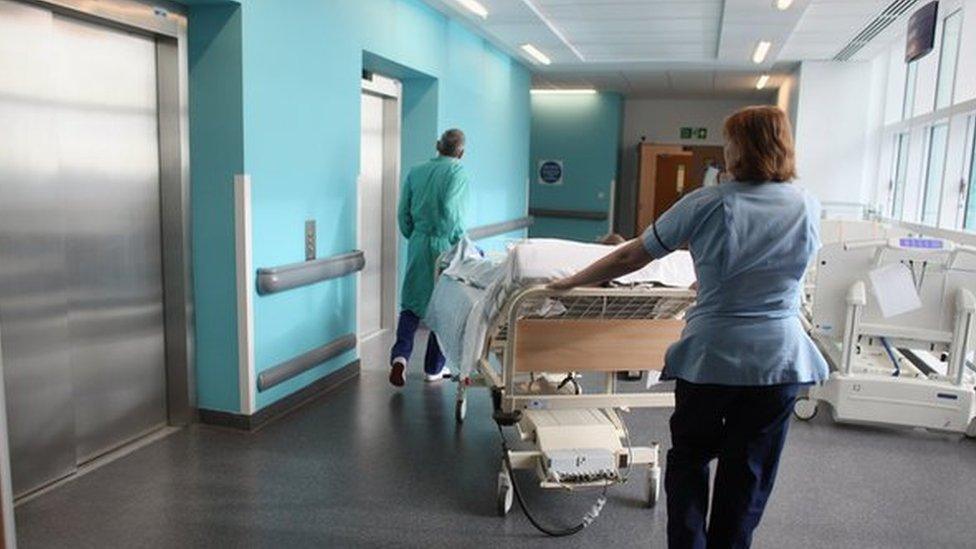
Waiting times for hospital treatment in Wales have again reached record levels, latest monthly figures show.
People waiting more than a year has reached record levels and accounts for nearly a quarter of the list.
Although the very longest waits - more than two years - have fallen for a fifth month in a row, there are still 59,350 patients waiting this long.
Cancer waiting times are the worst on record and ambulance performance times have equalled the worst on record.
Waits - from referral to hospital to when a patient is treated - passed 750,000 for the first time as the latest NHS performance figures were published on Thursday, showing a 28th successive month of rising waiting lists.
These are "patient pathways" so include people who more than one waiting list for different conditions.


When these are broken down, there are 589,000 individuals - 19% of the population - who are on a hospital waiting list.
This means more than 3,500 actual patients were added to the list in August.
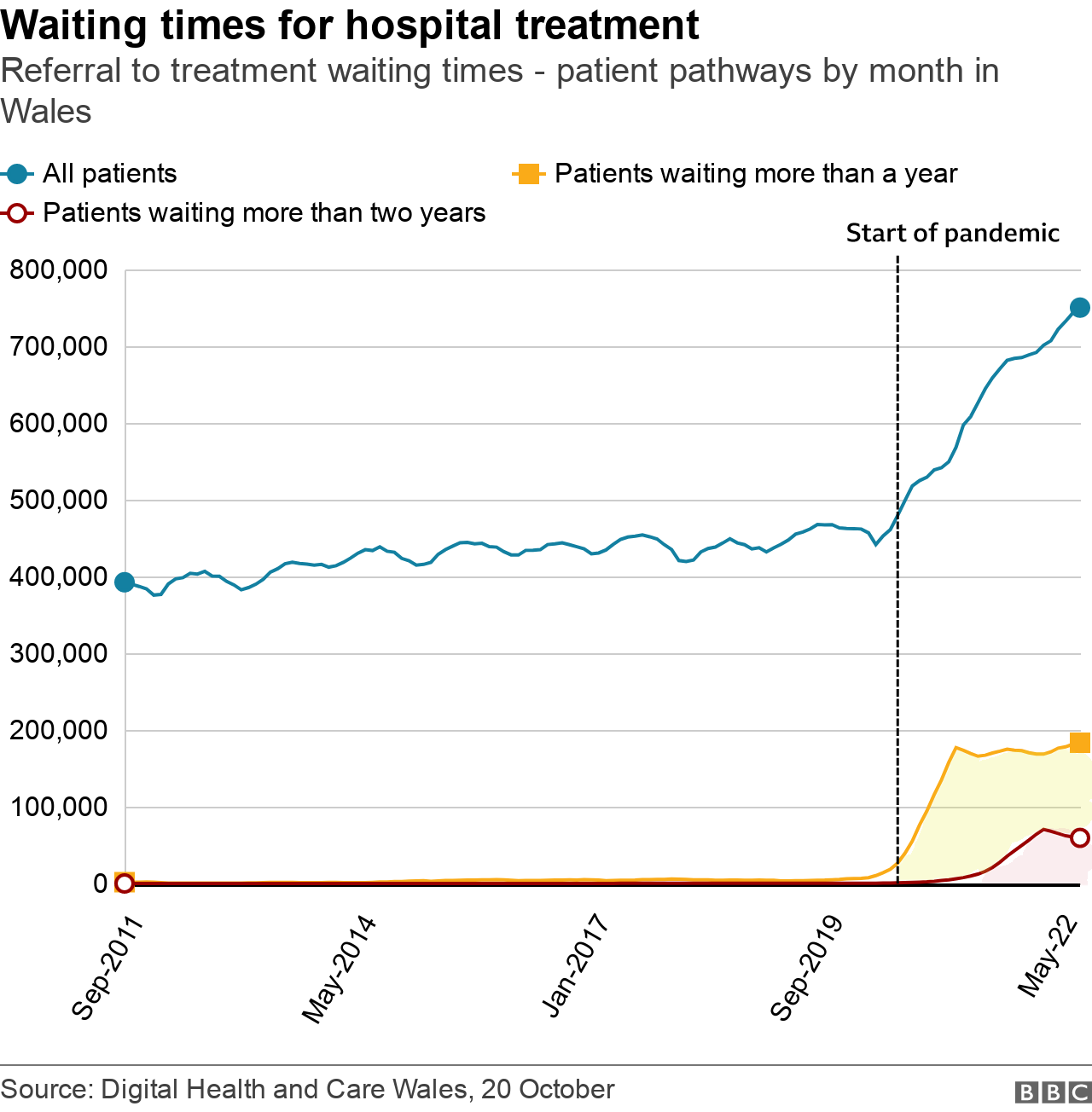

There were 240 people waiting more than two years in February 2020 but that rose to a peak of 70,417 in March 2022. That dropped to 59,350 in August, but there were still 183,450 pathways of patients waiting more than 12 months.

How does this compare with England?
Waiting lists are also rising in England and hit 7 million in August, but we can see by looking at the proportions waiting in different time periods that 60% of waits in England are less than 18 weeks compared to 45% in Wales.
The biggest difference is in those longest waits.
In England, about one in 20 patients on the list have been waiting more than a year, in Wales it is nearly one in four.
We can see in Wales, 7.9% of waits are more than two years - in England, it's just 0.04%.
NHS England has cleared the backlog of the very longest waits to about 2,646, by offering patients waiting more than two years treatment outside there area.
The Welsh health minister said NHS Wales was using private providers and encouraging people to go elsewhere "but the problem was there aren't many gaps elsewhere" and they were looking at "every option" as the demand keeps on coming.
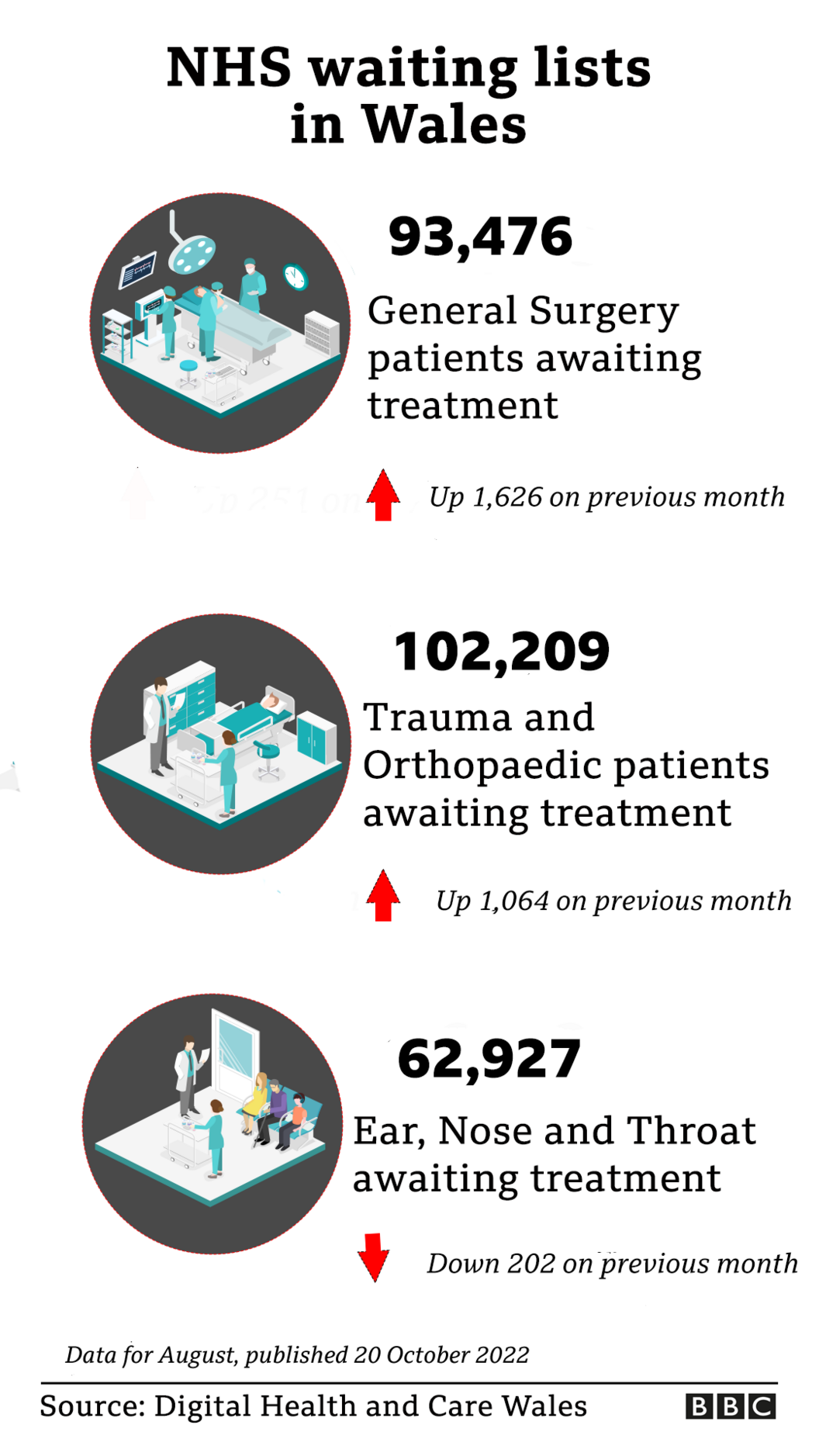

How does this break down?
Numbers waiting for orthopaedic treatment have passed 102,000 while those waiting more than a year is more than 40,700, and about 17,000 of these are waiting more than two years.
There were also rises in specialisms such as general surgery and ophthalmology, although there was a small drop on ear, nose and throat lists.
The target is that no patient should wait longer than two years in most specialities by March 2023, or longer than a year by spring 2025.

Outpatient waits also a record high
There is a new target for Wales to have no-one waiting for an outpatient appointment for more than a year by the end of 2022.
But August saw the number hit a record high of more than 102,000 waiting that long.


Waiting times in emergency units shows slight improvement
The performance against the four-hour target showed a slight improvement - with 67.8% of people seen within four hours at A&E in September, compared with 67% in August. The target, which has never been met, is 95%
Wrexham Maelor Hospital recorded the worst monthly performance of any Welsh A&E on record in July (33.5%) but in September recorded its best figures since January, showing 47.4% of patients were seen within four hours. This was the same as Ysbyty Glan Clwyd in Denbighshire, which has also been well below the Welsh average
Across Wales, there were still 10,230 people waiting more than 12 hours. The target is that no-one should be waiting this long
Average daily attendances at A&E during September were 2,876 emergency department attendances per day, slightly down on the month before
The median waiting time was two hours and 49 minutes, two minutes faster than the previous month.
Those aged over 85 wait the longest, with a median wait of nearly seven hours in emergency departments
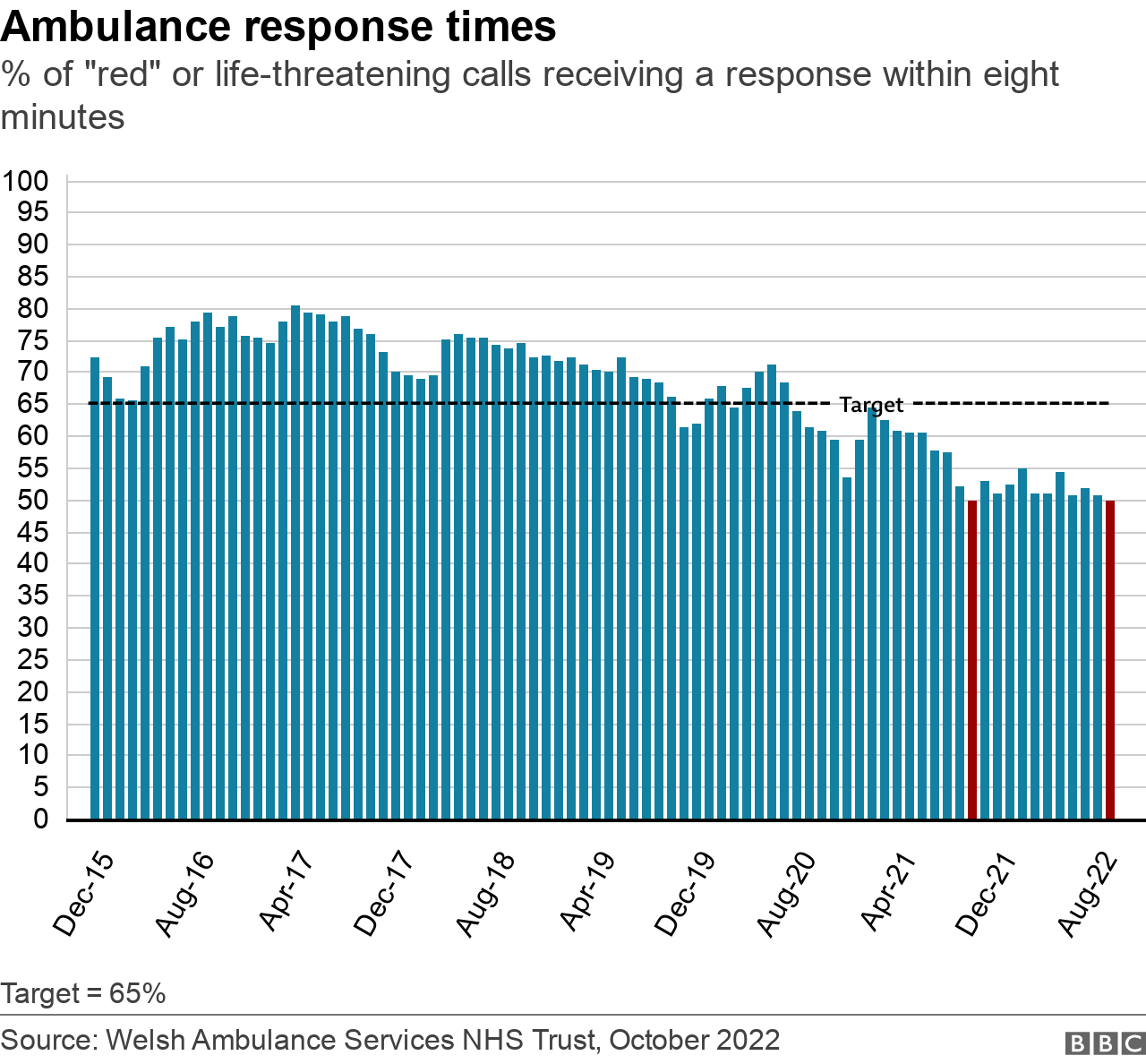
Joint worst ambulance response times on record
In September, only 50% of red (life-threatening) calls to the ambulance service were reached within the eight minute target time.
This equals the worst on record since comparable data began in 2019, with only half reached too in October 2021.
The target is to reach 65% in eight minutes and, on average, the service dealt with 100 such calls a day.


Cancer waiting times are worst on record
Only 52.5% of newly-diagnosed cancer patients started their treatment within the target of 62 days - the lowest proportion since this data series began in July last year.
This compared with 53.5% in the previous month and is 11.7 percentage points lower than August 2021.
Richard Pugh of Macmillan Cancer Support in Wales said: "This latest data holds a mirror up to the reality of cancer care in Wales. Wales must now act on what it is seeing.
"Right now, the stark reality presented by current performance data makes the Welsh government's plans to treat 80% of patients on time by 2026 look more like fiction than ambition.
The Welsh government said that a "huge amount of work, focus, investment and service change" was under way to tackle the number waiting for cancer treatment."
What has the response been?
The NHS Confederation in Wales, which represents health boards, said it was hearing that in some areas nearly half of beds were taken up by those clinically fit to be discharged.
"This means fewer operations can take place, fewer beds for patients coming into emergency departments and less capacity for ambulances, impacting individual patient's experience and outcomes," said director Darren Hughes.
He said the system was under "considerable and sustained strain".
Conservative health spokesman Russell George said: "For over two years we have called for surgical hubs to reduce the backlog, something backed by the Royal College of Surgeons. The Conservatives did in England but Labour did not in Wales."
Welsh Liberal Democrat leader Jane Dodds said: "Wales routinely has the worse health figures in Britain despite all nations facing similar challenges. This cannot go on."
Plaid Cymru health spokesperson Rhun ap Iorwerth said the figures were "not only a sobering reminder that the NHS in Wales is in crisis, but crucially, that current government interventions are not having the intended effect".
"The health minister is on record insisting that waiting time targets can still be met, but with numbers continuing to move in the wrong direction, the minister seriously needs to reconsider this unrealistic outlook."
Health Minister Eluned Morgan said NHS Wales energy bills had shot up and the government had to find money from existing budgets, apart from a little additional money from the UK government.
But Ms Morgan said the financial outlook she was facing next year was a "hell on earth" and inflationary pressures were leaving them in "dire trouble".
The Welsh government added: "We will continue to work with health boards on how we can best support them to meet our planned care targets."
"We acknowledge ambulance performance is not where we, NHS Wales nor the public expect it to be and we are driving a whole system response to support improvement.
"We expect health boards to take ownership and immediately reduce ambulance patient handover delays while working with social care services to improve timeliness of patient transfers home from hospital."
Related topics
- Published20 October 2022

- Published22 September 2022
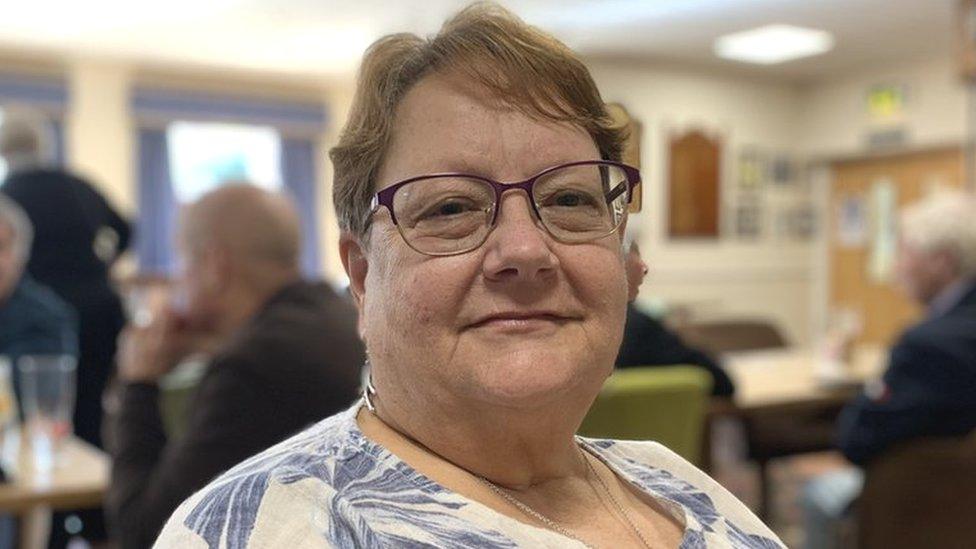
- Published18 August 2022
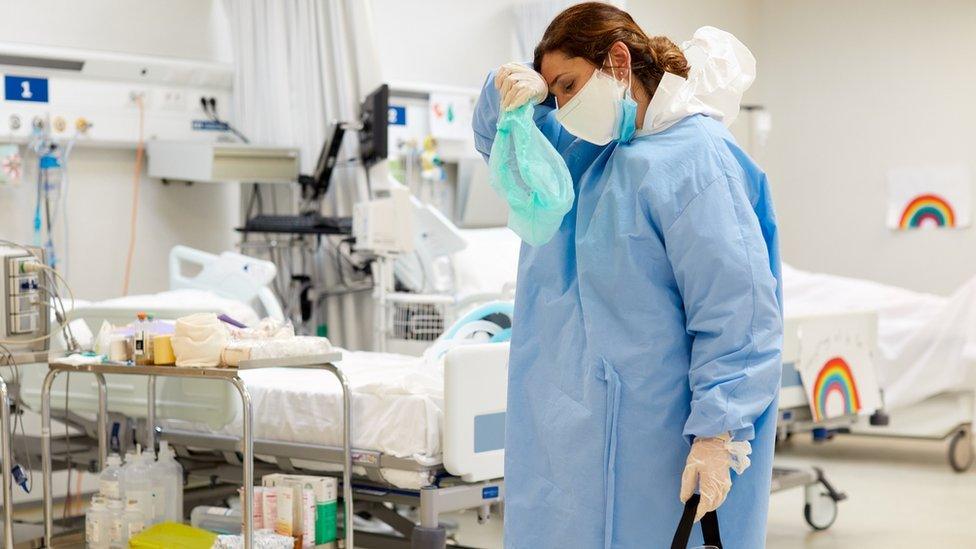
- Published20 April 2022
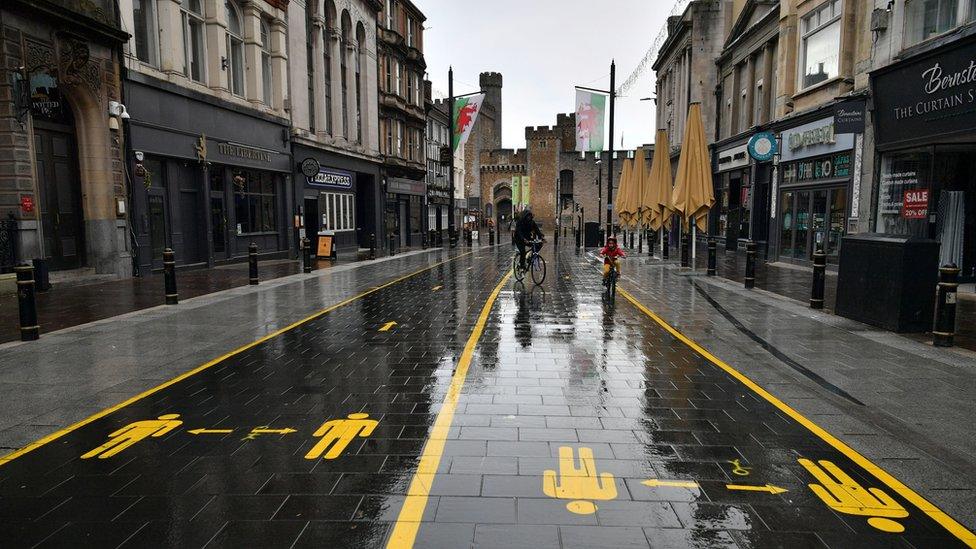
- Published24 March 2022
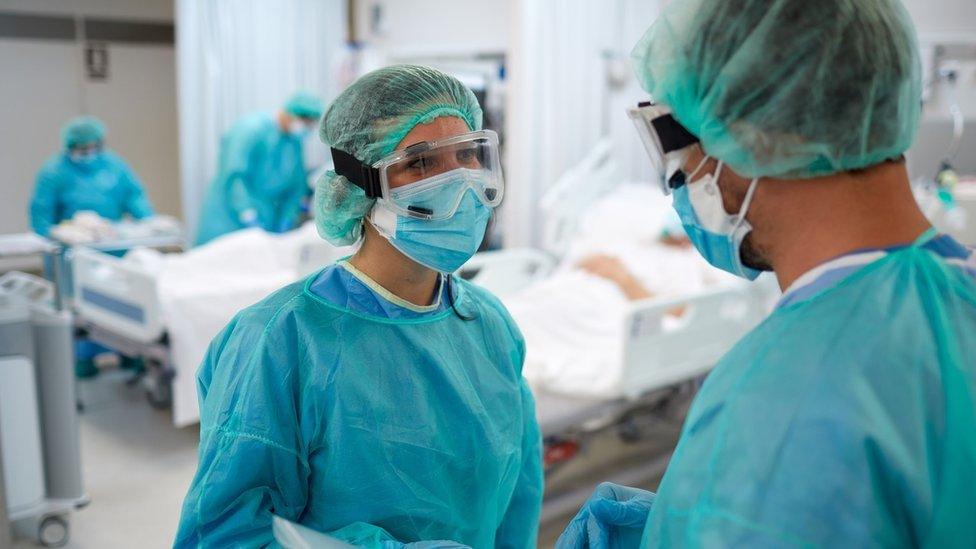
- Published17 February 2022

- Published31 March 2022
